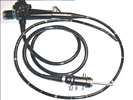Patient Safety
Superbug outbreak raises questions about endoscopes
March 4, 2015

LOS ANGELES – A “superbug” outbreak suspected in the deaths of two Los Angeles hospital patients is raising disturbing questions about the design of a hard-to-clean medical instrument used on more than half a million people in the U.S. every year.
At least seven people – two of whom died – have been infected with a potentially lethal, antibiotic-resistant strain of bacteria after undergoing endoscopic procedures at Ronald Reagan UCLA Medical Center between October and January. The Associated Press reported that more than 170 other patients may have been exposed as well, according to university officials.
UCLA said the infections may have been transmitted through at least two contaminated endoscopes that were used to diagnose and treat pancreatic and bile-duct problems.
The infections occurred even though the instruments had been cleaned according to the manufacturer’s instructions, the hospital said.
The episode is the latest in a series of outbreaks involving such instruments.
“You can very easily do everything right and still have some contamination,” said Dr. Deverick Anderson, an infectious-disease expert at Duke University. “We’re finding this is a problem, but it’s probably one that we don’t have a very good solution to right now.”
Lawrence Muscarella, a Philadelphia infection-control expert, said the recent incidents point to a design flaw that needs to be addressed.
An endoscope – or more specifically in this case, a duodenoscope – is a thin, flexible fiber-optic tube that is inserted down the throat to enable a doctor to examine an organ. It typically has a light and a miniature camera.
“We notified all patients who had this type of procedure, and we were using seven different scopes. Only two of them were found to be infected. In an abundance of caution, we notified everybody,” UCLA spokeswoman Dale Tate said.
The hospital said it has since changed its disinfection procedures, and they go beyond normal standards.
Meanwhile, the U.S. Food and Drug Administration issued an advisory warning to doctors that even when a manufacturer’s cleaning instructions are followed, infectious germs may linger in the devices. Their complex design and tiny parts make complete disinfection extremely difficult, the advisory said.
In a statement, the FDA said it is trying to determine what more can be done to reduce such infections. But it said that pulling the device from the market would deprive hundreds of thousands of patients of “this beneficial and often life-saving procedure.”
“The FDA believes at this time that the continued availability of these devices is in the best interest of the public health,” the agency said.
More than 500,000 patients undergo procedures using duodenoscopes in the U.S. every year, according to the FDA.
The company that supplied UCLA’s equipment, Olympus Medical Systems Group, did not immediately respond to an email request for comment.
The germs in this care are known as carbapenem-resistant Enterobacteriaceae, or CRE, and similar outbreaks have been reported in hospitals around the nation. They are difficult to treat because some varieties are resistant to most known antibiotics.
Healthy people usually don’t get CRE infections; infections typically occur in patients in hospitals, nursing homes and other healthcare settings.
By one estimate, CRE can contribute to death in up to half of seriously infected patients, according to the U.S. Centers for Disease Control and Prevention.
CRE can cause infections of the bladder or lungs. Symptoms can include coughing, fever and chills.
The bacteria may have been a “contributing factor” in the deaths of two UCLA patients, the university said. Those who may have been exposed are being sent free home-testing kits that the university will analyze.
National figures on the bacteria are not kept, but 47 states have seen cases, the CDC said.
One outbreak occurred in Illinois in 2013. Dozens of patients were exposed to CRE, with some cases apparently linked to a tainted endoscope used at a hospital.
A Seattle hospital, Virginia Mason Medical Center, reported in January that CRE linked to an endoscope sickened at least 35 patients, and 11 died, though it was unclear whether the infection played a role in those deaths.
